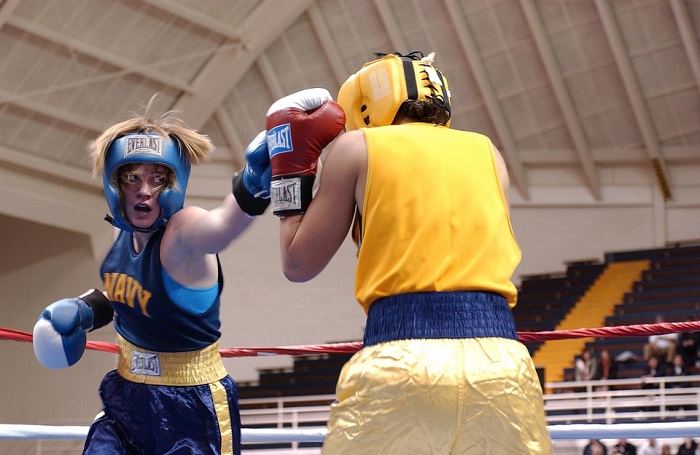
Every year, nearly 40,000 people suffer eye injuries when participating in sports or recreational activities, according to the American Academy of Ophthalmology, the majority of which can be prevented with correct safety gear. While young children are often the most vulnerable to eye injuries when playing sports and other games, even professional athletes can suffer injuries while on the job.
At the USC Roski Eye Institute, our ophthalmologists are no strangers to treating the sports-induced eye injuries of our football, basketball, and volleyball athletes. Whether you or a loved one is a USC athlete or not, our dedicated ophthalmologists and optometrists are committed to providing the most comprehensive and effective eye care to help get you back out on the field again.
Types of sports-related eye trauma
Even the most low intensity sports activities have a degree of risk when it comes to injuries to the eyes. From softball to racquetball, players need to take appropriate steps to protect their eyes from flying objects and other players’ body parts. The most common type of sports-related eye injuries include, but are not limited to the following:
- Blunt Eye Trauma – A sudden forceful impact to the eye or brow is one of the most common causes of a sport-related eye injury. Misjudging the speed of a flying object or coming into direct contact with a competitive opponent can result in a painful blow to the face. Minor blunt injuries may cause only bleeding in the eyelids, also known as a black eye, while more severe impacts may cause a ruptured eyeball, a detached retina, or even an orbital blowout fracture (one or more of the bones around the eyeball are broken).
- Penetrating Eye Injuries – An object that penetrates the eye can cause permanent vision loss, depending on the depth of the penetration and location. Broken glasses, flying debris, or coming into contact with another player’s gear or equipment can result in a penetrating injury.
- Corneal Abrasion – A scratch to the outer surface of the eye can occur when a small bit of debris blows into an athlete’s eyes or when diving for home plate during a final inning of baseball. In basketball, it is not uncommon for athletes to suffer a corneal abrasion from another player’s fingernail during close impact.
- Radiation Eye Injury – Prolonged exposure to the ultraviolet rays of the sun can be incredibly harmful to one’s vision. Athletes who play in water or snow sports, such as surfing or snow skiing are exposed to bright glaring sunlight that reflects off of the water or snow, increasing the risk of vision loss or damage.
- Chemical Burn – Chemical powders and spray paint used to mark the lines on an athletic field can easily be kicked up and get into an athlete’s eye. Chemicals, such as acids and alkali, can cause permanent blindness, while milder chemicals may cause only irritation, burning, and excessive tearing until the eye is washed with cool water or a sterile saline solution.
In the event of eye injuries, it is crucial to seek medical attention right away to prevent further trauma. Immediate medical treatment can dramatically improve the chances of preserving vision in the damaged eye. It is important to note that not all serious eye injuries are accompanied by visual signs or symptoms. Only a thorough eye exam by an eye doctor can rule out serious eye injury.
Protect yourself from eye injuries
Whether participating in low risk sports, like track or cycling, or high-risk sports, such as hockey or football, it is crucial to wear the appropriate protective eyewear. Although glasses or sunglasses do not protect every athletes from all blunt trauma or penetrating injuries that can occur, protective sports eyewear with special impact-resistant lenses significantly reduce the risk of serious eye injury to athletes. Sports eyewear can certainly also be made in the specific prescription of the athlete, helping enhance the vision and performance of the athlete.
Basketball players often wear goggles made of polycarbonate lenses to help prevent eye injuries from other players’ fingers or elbows. It is in everyone’s best interest, whether a child or a professional athlete, to wear the protective gear that is available for their sport, and this should include protective eyewear.
Even if a sport requires a helmet or face mask, the eyes are often still left vulnerable to debris and blunt impact. Consult with an experienced eye care provider to determine the best eyewear for your chosen sport, and ensure that your sight is as safe and protected as possible.
Expert care at the USC Roski Eye Institute
It is important to receive a thorough eye exam from a professional optometrist or ophthalmologist prior to engaging in any sports to ensure that your eyes and vision are not only healthy and strong, but also protected against future injuries. Our skilled ophthalmologists can also provide effective treatment in the event of a sports-related trauma.
To schedule an appointment at the USC Roski Eye Institute, please call (323) 442-6335 or contact us to schedule a consultation today.
Topics
